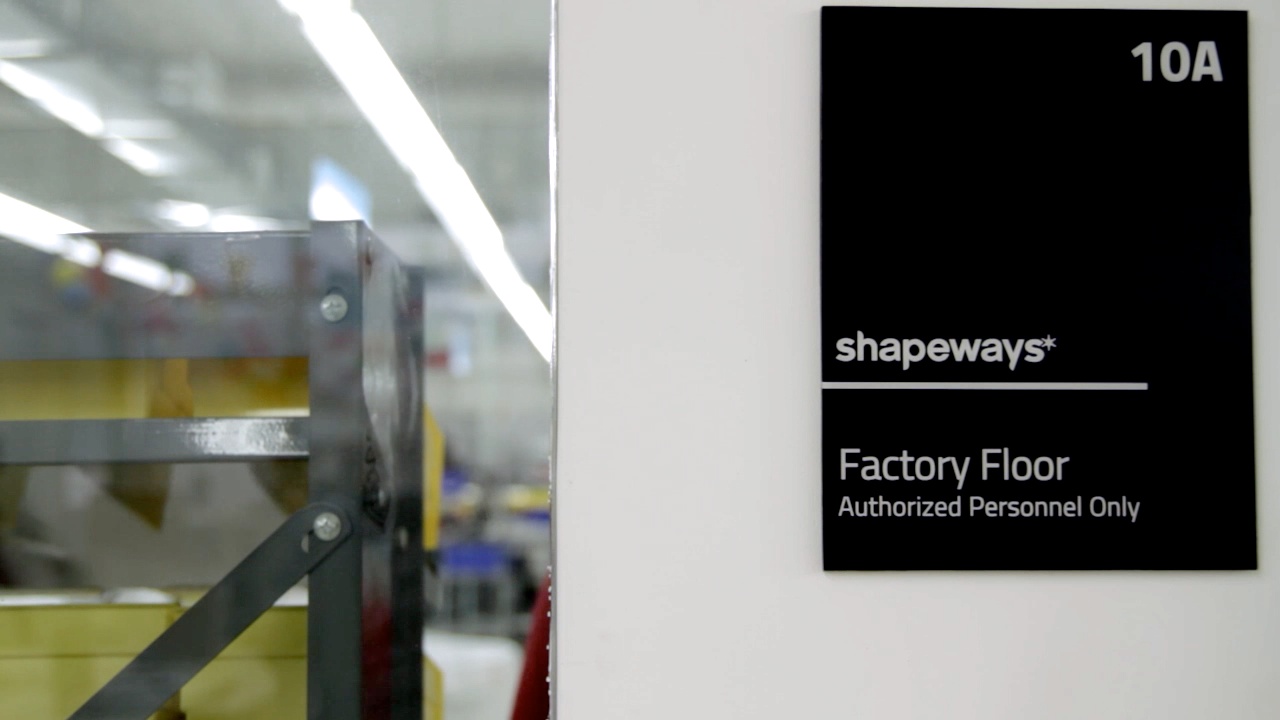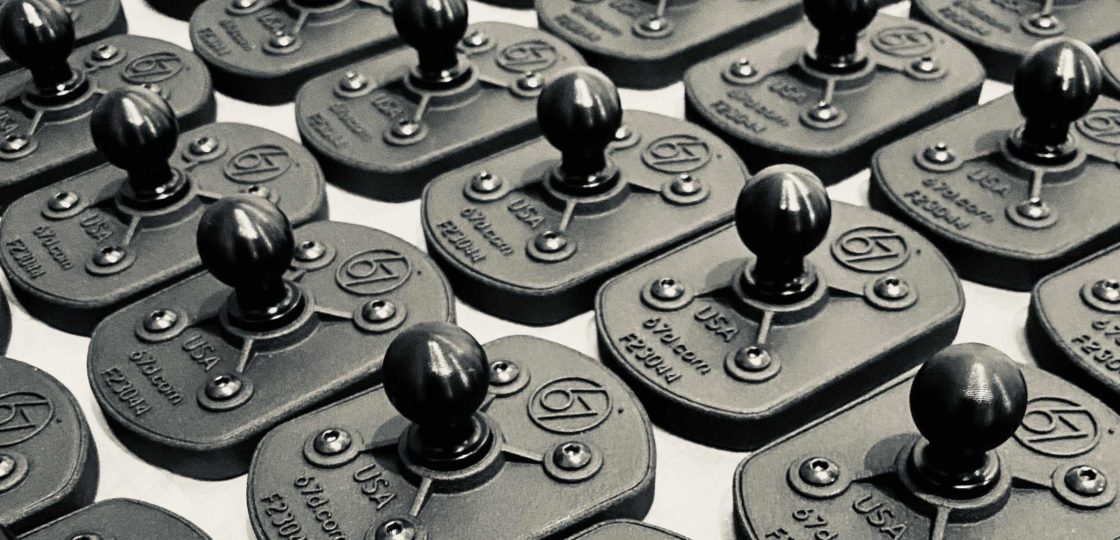
“The context of every customer order is really important to us.”
Aidan O’Sullivan, Vice President of Operations at Shapeways
Defining the Elements of Quality in Manufacturing
- Quality assurance: continued attention paid to products over the course of manufacturing to ensure requirements are met.
- Quality control: inspection and testing to make sure the end product is correct.
- Quality management: the overseeing of all processes required to deliver a first-rate product to the customer.
Quality products offer benefits to the customer and fulfill a need, leading them to Shapeways. Meticulous manufacturing results in a product that is delivered without defects or damage. Quality also means consistently making improvements as needed.
The Evolution of Quality Assurance at Shapeways
While the fine line between QA and QC may sometimes blur, understanding the differences is helpful if you have an interest in manufacturing. At Shapeways, it doesn’t matter whether a customer needs a prototype or a high-performance, end-use part—the QM process is the same.

Michel van Dooren, Quality Engineer for Shapeways at the Eindhoven facility in the Netherlands, explains that while there is currently not a distinction for breaking out the two during QM, he is also in the process of designing QC mechanisms for specific industrial applications like automotive parts.
In the past few years, there has been a gradual shift toward business-to-business (B2B) services at Shapeways, leading to a sharpened focus on more intense customization and industrial quality management processes. Continued customer demand, with Shapeways now reaching the 20 million milestone in 3D prints, has also led to a turning point for instilling even more comprehensive QA and QC.
Customization is one of the most expansive benefits of 3D printing; in fact, the ability to bypass the one-size-fits-all mentality and customize parts is one of the biggest reasons customers depart from conventional manufacturing. This also translates to customized quality management at Shapeways, largely shaped by what the customer is expecting—and what is possible as designs, specifications, technology, and materials all come together.
“There are still certain technological restrictions we can’t always influence,” said van Dooren. “In most cases, as long as the customer is okay with continued optimization to make the design work, we can repeat the same part over and over.”
Customized quality management plays a large role, however, there are ongoing basic requirements which should be met too. From 2019 to 2020 both the Eindhoven and Long Island City facilities became ISO 9001 certified, further solidifying the roadmap for QM at Shapeways.
ISO 9001 includes a set of rules for establishing quality management in a business, leading to certification that Shapeways now has—ensuring there is a formal QM system for both the NY and Netherlands facilities. Van Dooren points out that maintenance of 3D printers is a priority too, and Shapeways employs a Total Productive Maintenance (TPM) program.

“We work closely with the original equipment manufacturers to tweak preventative maintenance schedules based on data we are recording during operations,” adds Aidan O’Sullivan, Vice President of Operations at Shapeways. “We are continually optimizing their preventative maintenance schedules in a feedback loop.”
Live monitoring is another critical tool for avoiding or offsetting errors during production. Cameras continuously watch over 3D printing in the factories, highlighting any abnormalities, and sending out notifications. Message bots are also continuously running and pushing out any necessary notifications.
Quality Assurance Means Aligning with the Customer
O’Sullivan oversees and guides operations at both the factory in Long Island City in New York, and the Eindhoven facility in the Netherlands—along with the network of supply chain partners. Because his role is not a traditional operational role, O’Sullivan enjoys being involved in the commercial side too as he can see the full scope of the business.
“The beginnings of quality assurance or alignment actually come from the landing pages that we have on our website discussing the materials, what their properties are, what they’re suitable for, and then the customers are given choices for design tolerances,” said O’Sullivan.
“That is the genesis of quality management in finding out what the customer wants to achieve.”
3D printing is unique in these processes on several levels. First, industry standards and QM are relatively new developments industry-wide. Unquestionably, procedures and standards must be in place, but today that still varies greatly between companies. Undeniably, the goal is quality, paired with the capability to innovate like never before. O’Sullivan points out that at Shapeways, customers put the QA process into action as soon as they upload a 3D model:
“So when you talk about quality assurance, before a model even gets into a printer or comes to manufacturing, the first thing we try to do is align what the customer wants depending on the options they choose from the website. We have a user applications group where we assist customers on selecting the optimal material and technology combination to achieve their goals.”
Often newer users expect to use settings which work better for conventional technology. Adjusting to the nuances of 3D printing can take some time, but in the end customers benefit from better, stronger parts designed to meet their specific needs. Large service parts are a good example in terms of adaptability issues, as varying materials or methods may be necessary to avoid stress factors, warping, or outright failure.

Testing & Traceability
Traceability: the entire journey of the product—from the concept and design phase to being placed in the customer’s hands.
Materials are stringently tested for excellence. Once a job has been printed, tensile testing bars are used to evaluate parts and make sure they are all up to Shapeways standards—exemplifying a basic QC ‘sign-off.’
“There is a standard piece that is always in a fixed position and printed with every single job,” said van Dooren. “Once printing is finished, that part is always measured and evaluated. If accuracy of the part is off, action needs to be taken; in some cases, the machine may need to be calibrated or lasers may need to be adjusted.”
As an example, Shapeways 3D prints custom knee braces made from Nylon 12 [Versatile Plastic] for patients to use after surgery. The part has to be very strong; however, there is a specific weak point in the braces, so the structures have to be custom-oriented in the build, with a manual flex stress test afterward.
“There’s a lot of tracking and full traceability between the individual part, the printer it was printed on, who operated the hardware, performed post-processing, and more,” said O’Sullivan.
Quality assurance starts with an understanding of what the customer wants, while quality control means delivering. In some cases, that process may take more time and effort, but Shapeways can customize the process further by providing a standalone build, fixing orientation for success, and more—if it makes sense.
“The very nature of 3D printing is so bespoke,” said O’Sullivan. “The quality requirements for applications like medical or drone technology or gaming are totally different but in some cases they can all be produced using the same technology.”
“Once you start getting into individual user applications, things can be added on or removed.”
While other types of manufacturing may have conventional manuals to refer to for QM, in 3D printing each project may be different—leaving Shapeways with many unique stories to tell about customization.
“This is always going to be the type of business where we are evolving based on customer needs,” said O’Sullivan.
Shapeways has worked with over a million users to help 3D print over 20 million products in 90+ different materials and finishes. Enjoy the benefits of advanced technology and a wide range of materials for printing your creations with accuracy, complex detail, and no minimum or limits in terms of mass customization or single part orders. Read about case studies, find out more about Shapeways solutions, and get instant quotes here.

